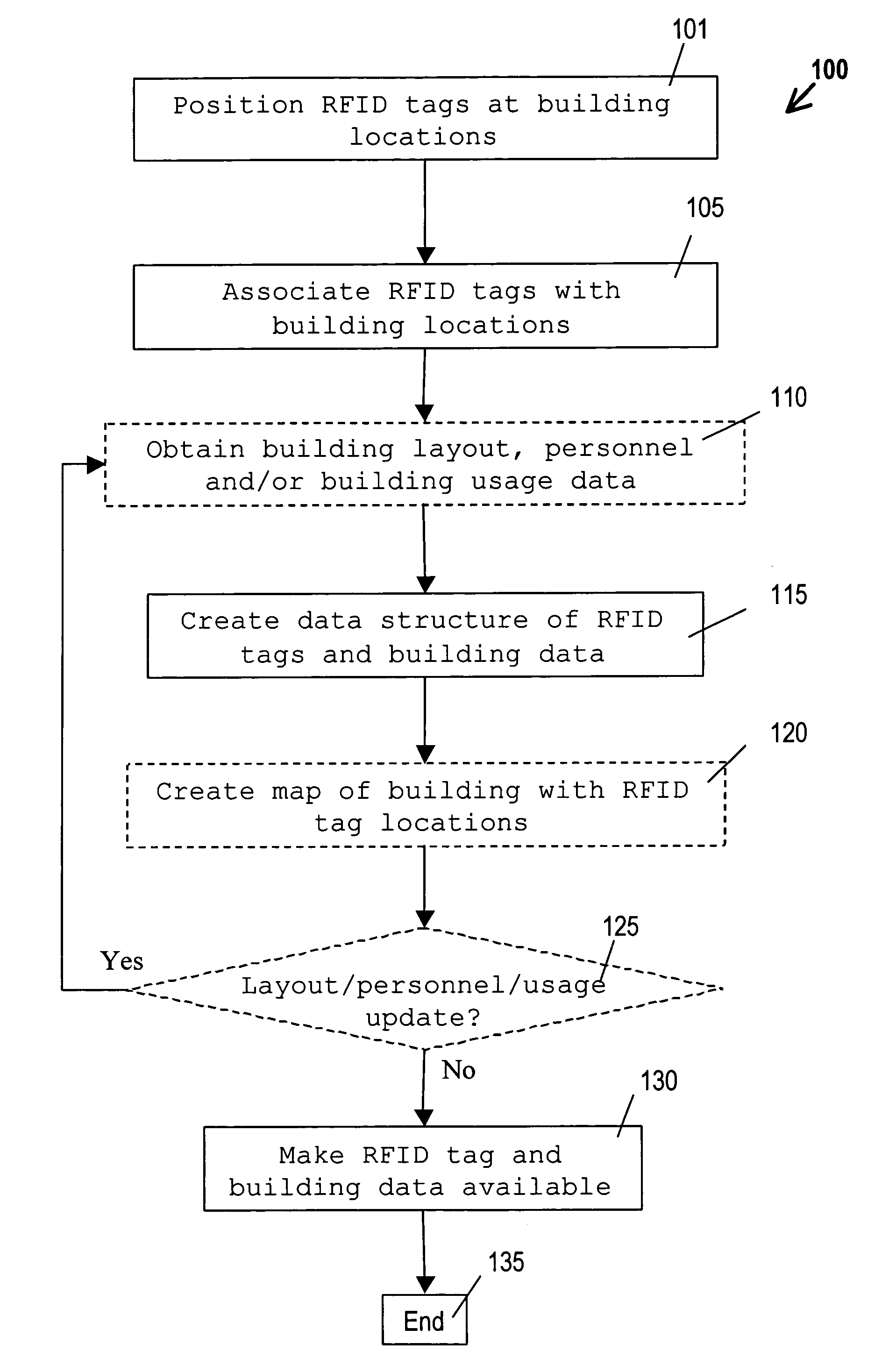Navigation and coordination during emergencies
a technology for emergency services and navigation, applied in the direction of individual entry/exit registers, burglar alarm mechanical actuation, instruments, etc., can solve the problems of difficulty in determining the location of emergency service providers, layout of buildings and may become disoriented, and difficulty for fire fighters to see clearly enough to distinguish building features
- Summary
- Abstract
- Description
- Claims
- Application Information
AI Technical Summary
Benefits of technology
Problems solved by technology
Method used
Image
Examples
Embodiment Construction
[0034]In this application, numerous specific details are set forth in order to provide a thorough understanding of the present invention. It will be obvious, however, to one skilled in the art, that the present invention may be practiced without some or all of these specific details. In other instances, well known process steps have not been described in detail in order not to obscure the present invention.
[0035]The present invention includes methods and devices for locating emergency service providers during emergency operations. One such method 100 is illustrated by the flow chart of FIG. 1. The steps of method 100 (and the other methods described herein) are not necessarily performed in the order indicated. Moreover, some aspects of the invention involve similar methods having more or fewer steps. In step 101, RFID tags are positioned at various locations throughout a building.
[0036]As shown in FIG. 2A, an RFID tag 200 includes microprocessor 205 and antenna 210. In this example,...
PUM
 Login to View More
Login to View More Abstract
Description
Claims
Application Information
 Login to View More
Login to View More - R&D
- Intellectual Property
- Life Sciences
- Materials
- Tech Scout
- Unparalleled Data Quality
- Higher Quality Content
- 60% Fewer Hallucinations
Browse by: Latest US Patents, China's latest patents, Technical Efficacy Thesaurus, Application Domain, Technology Topic, Popular Technical Reports.
© 2025 PatSnap. All rights reserved.Legal|Privacy policy|Modern Slavery Act Transparency Statement|Sitemap|About US| Contact US: help@patsnap.com



